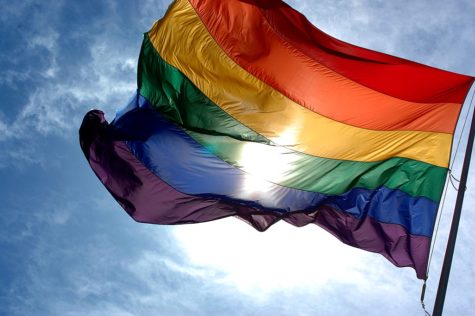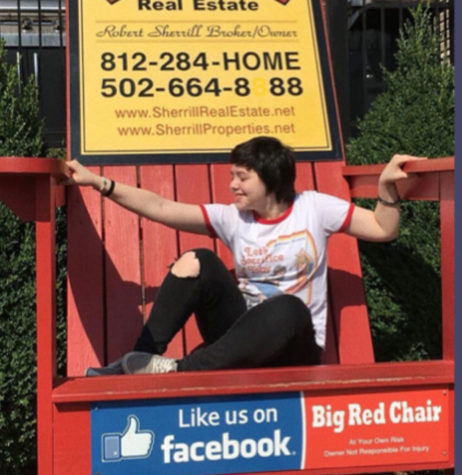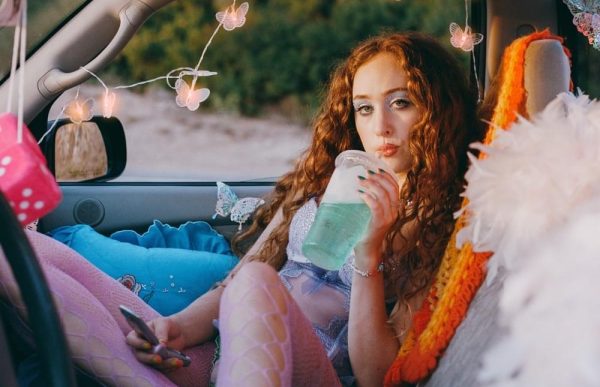The media is trying to kill us!
Two male symbols intertwined and two female symbols intertwined represent same-sex attraction.
September 6, 2018

Unfortunately, it is a stunningly common trope in the media to kill the gays. Yes, straight people are killed off in the media, but when there are minimal gay characters, and they get brutally killed off is when it becomes concerning.
Comics like “Freedom Ring,” “Annihilation: Conquest,” “The Order,” “Grendel” and “Secret Six,” put their LGBT characters through hell. In the “Annihilation: Conquest” series, Thanos kidnaps Moondragon, a lesbian character, uses her as a hostage, rips off her ear and sends it to her lover, Phyla. In this comic, she does survive, but later in the series she is permanently turned into a dragon before dying to protect Phyla. As the ultimate brutal act, Moondragon is brought back just in time to see Phyla get killed off, never to return. Movies like “A Single Man,” where the main character George literally just gets over his suicidal thoughts, drops dead at the end of the movie. They put the character through his lover dying in a car crash, only to have him go through 10 months of incredible suicidal thoughts, before him finding someone who made him happy and then actually making him drop dead in the middle of kissing his lover.
It is the most frequent in TV shows, such as the Netflix Original, “Voltron: Legendary Defenders.” Many viewers believe this is to keep the views going. After seven seasons of fans hoping to get any LGBT representation, Takashi “Shiro” Shirogane is shown, in a flashback, to have a boyfriend named Adam. The next episode, it is revealed Adam is dead. This sparked outrage with fans, even getting actress Bex Taylor-Klaus to tweet out to Twitter user “jarjarstiddies” saying, “it’s not queerbaiting-it’s just not the queer content you want.” As if killing off one of the only few gay people on the show is “queer content” anyone wants.
According to GLAAD’s “Where We Are On TV Report,” in 2016 and 2017, there were 895 main characters on scripted primetime broadcast shows, and 43 were LGBT characters. This is the largest number in history.
Although these are fictional characters, the consequences of seeing the already few gay characters die hurts a lot worse than it seems.
The problem is not only killing off characters, sometimes it has to happen. Anyone could be killed, nobody is immune. The problem lies in the fact that the death is usually to benefit another character’s storyline. LGBT people are already so underrepresented in the media and younger viewers who see themselves in characters find a lot of discomfort and sadness when all of the people like them die.
This is why TV shows such as “Brooklyn Nine-Nine” and “Adventure Time” are so important. Their gay, bisexual, lesbian and transgender characters get a personality and their sexuality is explored. Throughout the series, “Adventure Time” there are hints of Marceline and Princess Bubblegum being romantically involved. The series finale that aired Monday featured a kiss, confirming their relationship. In “Brooklyn Nine-Nine,” there is a gay male and a bisexual women, both of whom get romantically involved with someone of the same gender.
“I was really excited about [Rosa being bisexual]. I hadn’t really seen much of that representation in television that I personally watch. I know it’s out there, but often times it’s written in a specific way. ‘Let’s introduce a gay character and quickly kill them off,’ so you have the ride of the complexity of this amazing character, but also [you do] not necessarily deal with them over the course of our entire show. Obviously, that’s probably not going to happen in this case [laughs], because Rosa is a core member of this ensemble. It’s not like she’s going to come out and then get hit by a car and get killed off. It’s really cool to me that our show is exploring something with almost the safety net underneath it, telling the audience, ‘Look, we’re not doing this so that we can explore a story and simply throw it away when it’s convenient for us. We are going to keep this person around because we love this person already.’ It’s part of the family,” said Stephanie Beatriz, a bisexual character on “Brooklyn Nine-Nine.”









braedon treadway • Sep 7, 2018 at 10:37 am
The articles on statesman should reflect the views of the school or actual news. This article is a crazed rant trying to compare the media to Thanos comic. While articles are subject to scrutiny from every different opinion, but this passage is completely unrepresentative.
adviser • Sep 10, 2018 at 8:09 am
Thank you for your comment, although this is an opinion piece. We are always looking for ways to improve our website. There is always the option to write a letter to the editor if you would like to have your voice heard. You can send letters to [email protected].